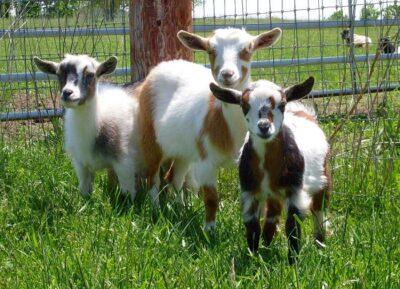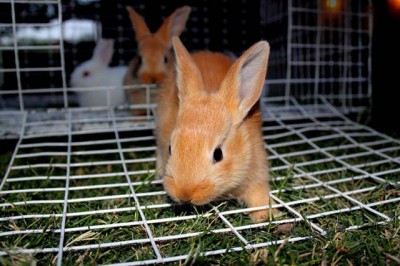
Image source: dreamersfarm.com
Living out in the middle of nowhere is appealing … but not always possible. Living in the suburbs, though, doesn’t mean you can’t have the farm you’ve always wanted.
There are lots of resources that teach about gardening in small spaces, but hardly anything about livestock. Which makes it feel like keeping animals on a small piece of land – even as small as one-quarter acre – is impossible. But it’s not! You just have to be clever about it.
Are you looking for fresh eggs and meat? Would you like to be able to sell your extras? Basically, livestock can offer five valuable resources: fiber, eggs, meat, milk and offspring. Picking animals that can give you the resources you need without taking up much space is the key if you have a small yard.
1. Chickens. Chickens are easy to raise and easy to keep. They eat mosquitos’ eggs and pesky spiders, which can make your backyard more comfortable. You will want to consider multi-purpose breeds such as Rhode Island Red, Plymouth Rock or Sussex. These breeds produce a good number of eggs and enough meat to be worth eating. Roosters are necessary if you want to grow your flock. But keep in mind they are not allowed in most urban and suburban areas due to their noisy crowing. Each hen needs only three square feet with adequate nesting boxes.
2. Ducks. Keeping ducks is similar to keeping chickens. They don’t take up much space and they make very little noise. Male ducks don’t crow like roosters, which makes them more neighbor-friendly. They, of course, also help produce fertilized eggs. Ducks require four square feet of coop space per bird and lots of space to run around outside. Domestic ducks are bred to be heavier so they don’t fly and have more meat on their bones.
3. Quail. Quail are much smaller than other fowl and take up less space. They make very little noise, which is great for those of us with close neighbors. They eat less and use less bedding. In fact, many quail keepers use wire bottom cages without any bedding at all.
All The Answers To Every Chicken Question And Quandary You Have …
They mature quickly and begin laying eggs every day from the age of six weeks when cared for properly. You can often keep quail in areas where chickens are not permitted. However, because they are smaller, they lay smaller eggs and don’t have as much meat as the larger fowl.
 4. Dwarf goats. Keeping dwarf goats has been compared to having dogs. They’re affectionate and enjoy being around people and other animals. They are social animals and are happiest with other goats. They are multipurpose animals because they have tasty meat and milk and some produce high-quality fibers such as Mohair and cashmere. They require five to six square feet of living space and 20 or so feet of grazing area. They do best with traditional grass grazing and also enjoy some grains.
4. Dwarf goats. Keeping dwarf goats has been compared to having dogs. They’re affectionate and enjoy being around people and other animals. They are social animals and are happiest with other goats. They are multipurpose animals because they have tasty meat and milk and some produce high-quality fibers such as Mohair and cashmere. They require five to six square feet of living space and 20 or so feet of grazing area. They do best with traditional grass grazing and also enjoy some grains.
5. Sheep. Sheep may be the perfect multipurpose animals. Sheep produce wool, but they are also great meat animals and even produce high-quality milk. They are generally not the friendliest of animals. Sheep are prey animals, which means that they are naturally more nervous which makes them more difficult to milk and causes them to kick and butt. They do have more complex needs when it comes to lambing. If you don’t plan on breeding your ewes, then housing shouldn’t be too much of an issue. A full-grown ewe requires between 12 and 16 feet square feet of living space, and a lambing pen should be between 16 and 25 square feet.
6. Rabbits. Rabbits are often kept as pets, but they also have benefits for the homestead. They create great fertilizer and compost and are good eating. Rabbits produce angora wool, which is a highly sought-after fiber. They take up very little room and they don’t eat much. The downside is that they are messy and often smelly. However both of these issues can be remedied by frequently adding fresh bedding to their homes. The amount of space they require varies depending on their size. Rabbits that are less than five pounds require one to two square feet where rabbits that weight 11 to 12 pounds require five square feet.
Before you jump into keeping any kind of livestock, be sure and check your local zoning requirements. Most areas have guidelines listed right on their website or you can make a quick phone call to the zoning authorities or animal control. No matter what kind of area you live in, there likely are animals to fit your needs and space.
Which livestock do you believe are best for a small plot of land? Share your thoughts in the section below:
 Off The Grid News Better Ideas For Off The Grid Living
Off The Grid News Better Ideas For Off The Grid Living



